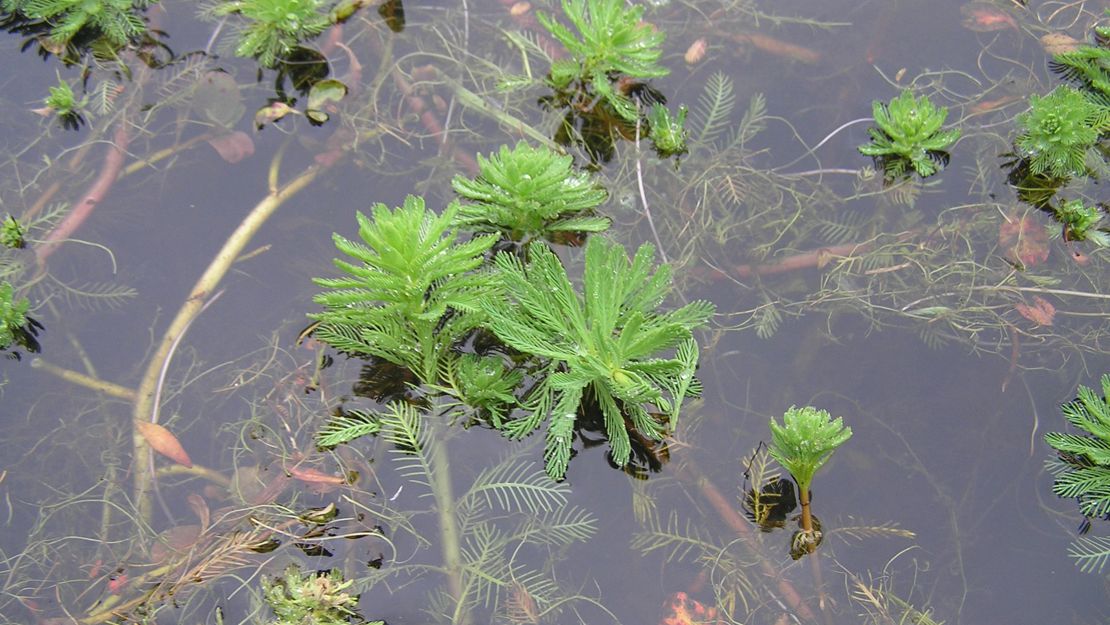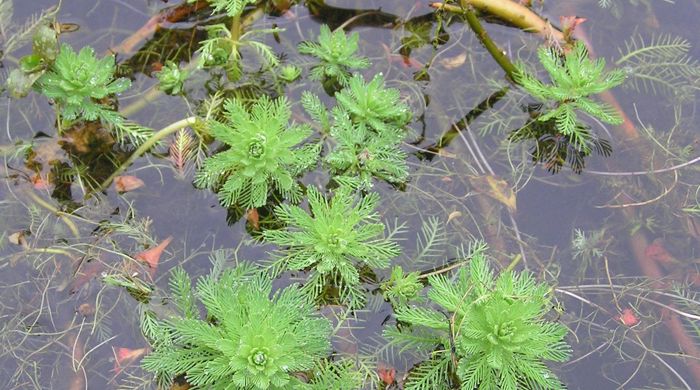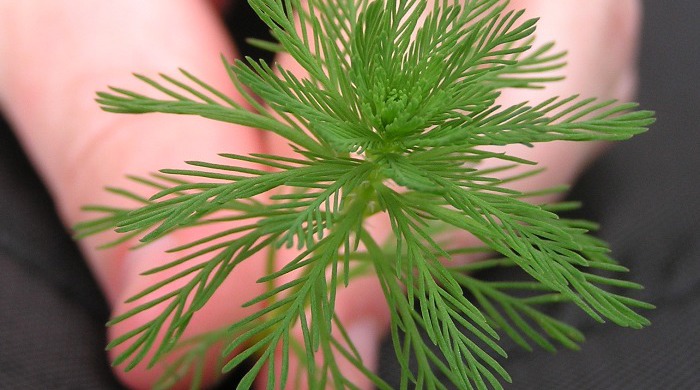Myriophyllum aquaticum
Parrot's feather
Family: Myriophyllaceae
Origin: South America

Regional Pest Management Plan (RPMP) status
- Aotea — Exclusion
- National Pest Plant Accord Species
- Whole region — Sustained control
General description
Submerged, bottom-rooted, stoloniferous, sprawling aquatic herb. Leaves are finely divided, feathery, arranged in whorls of 4-6 and heterophyllous. Flowers are minute, female and produced in September – February.
What you need to know
To help protect our environment:
- You must not breed, distribute, release or sell parrot's feather. As parrot’s feather is a National Pest Plant Accord species, these restrictions apply within the Auckland region and across the whole of New Zealand.
- You must not plant parrot's feather within the Auckland region.
- You must destroy any parrot's feather on land that you occupy if it has been planted in breach of the above rules and you are directed to do so by an authorised person.
If you see parrot's feather anywhere on Aotea/Great Barrier Island group, please report it to Auckland Council at pestfree@aucklandcouncil.govt.nz.
Habitats
Still or slow-moving water bodies.
Dispersal
Vegetative spread from rhizome and stem fragments, dispersed by water movement. Human-mediated dispersal through contamination of machinery, boats and equipment.
Impact on environment
Displaces native plant species, decreasing native plant species’ richness. Decreases invertebrate abundance and diversity in invaded water bodies.
Control
Site Management
Follow up treated areas 3 times per year. Encourage natural regeneration of native plants or replant treated areas where possible after 2-3 treatments to establish dense ground cover and minimise reinvasion.
Recommended approaches
Do not attempt to undertake control of this species on Aotea/Great Barrier Island group. Please report to Auckland Council if seen on Aotea/Great Barrier Island group.
Physical control
Method: Rake up and pull out between November and January.
Disposal options: Leave onsite to rot down away from the water.
Biocontrol
Biocontrol is currently not available for this species.
Community agrichemical control recommendations
Certified Handler/Experienced agrichemical user: Follow up in summer after pulling out plants with a foliar spray of 100 ml glyphosate green per 10 L of water.
Foliar spray emergent foliage with 100ml glyphosate green per 10L of water in October/November. Respray before foliage reaches 50mm high approximately every month.
Caution: When using any herbicide or pesticide please read the label thoroughly to ensure that all instructions and safety requirements are followed.





